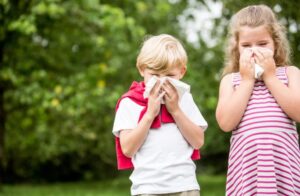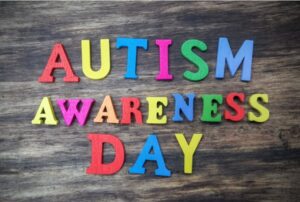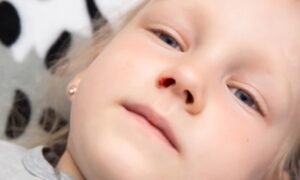As parents, we try our best to provide our children with the best nutrition by introducing them to a variety of foods to ensure a diverse and balanced diet. However, sometimes children may have reactions after eating certain foods, which can result in food allergies or intolerances.
What is a Food Allergy?
A food allergy is an abnormal reaction of the body's immune system to food. The immune system typically protects us from harmful microorganisms. When food triggers the immune system, a food allergy occurs.
Certain common foods may trigger allergic reactions in children. These include eggs, milk, peanuts, tree nuts (such as almonds and cashews), soy, and wheat. Genetic predisposition is the most common cause of food allergies in children. If one or both parents have food allergies, respiratory allergies, or eczema, the child’s risk of developing similar allergic conditions increases. Children with eczema also have a higher risk of food allergies.
Common Allergenic Foods
Almost any food can cause an allergy, but the most common allergens include:
- Milk: Cow’s milk allergy is one of the most common food allergies in children. However, most children outgrow it by ages 3 to 5.
- Eggs: Egg allergy occurs due to an allergic reaction to egg proteins found mainly in the egg white. Since egg yolks still contain proteins, individuals allergic to egg whites must completely avoid eggs.
- Soy: When babies suspected of having a cow’s milk allergy are switched to soy formula, some may develop a soy allergy. Most children outgrow soy allergies, but some may remain allergic even into adulthood.
- Wheat and Gluten: Wheat allergies may occur during the transition to solid foods. Other wheat-based foods like bread and pasta may also trigger allergic reactions. Some children may have a specific reaction to a protein called gluten found in wheat and other foods.
- Seafood: Shellfish is one of the most common allergens among older children in Asia. Fish allergies are less common but can still occur.
- Peanuts: Peanut allergies are more common in the West than in Asia but are one of the most common causes of severe allergic reactions in children in places like Singapore.
- Tree Nuts: Tree nuts include hard-shelled nuts like walnuts, pecans, cashews, Brazil nuts, almonds, and hazelnuts. A person may be allergic to all tree nuts or just a few of them.
Symptoms of Food Allergies in Children
The most common symptom of food allergies is skin reactions. A few minutes to a few hours after eating the food, the child may develop hives—itchy red welts of various sizes on any part of the body. Some children may also experience swelling around their lips or eyes.
Gastrointestinal symptoms, such as stomach pain, vomiting, or diarrhea, are the next most common signs of food allergies.
Food allergies can also cause more severe symptoms, including difficulty breathing, swelling of the throat or tongue, and even a drop in blood pressure, leading to paleness or fainting.
Food Intolerances in Children
Food intolerance occurs when the body cannot properly process certain foods due to physiological reasons. The most common food intolerance is lactose intolerance, which occurs because the body lacks lactase, the enzyme needed to break down lactose, the main carbohydrate in dairy products like milk and cheese. Children with lactose intolerance may experience abdominal pain, bloating, or diarrhea after consuming dairy products.
Food intolerance can also be a reaction to naturally occurring chemicals in certain foods. A common example is a reaction to caffeine, which may cause insomnia, restlessness, or irritability after consuming coffee or other caffeinated beverages. Some people may also react to food additives like monosodium glutamate (MSG), experiencing headaches, hot flashes, or even chest pain after consuming foods containing MSG.
How to Differentiate Between Food Allergies and Food Intolerance
Food allergies are more common in infants, while food intolerances usually develop during adolescence or adulthood.
Children with food allergies will show symptoms even from a small amount of the triggering food. In contrast, food intolerance symptoms depend on the amount consumed. Those with food intolerance are more likely to experience symptoms when they consume large amounts or frequently eat the problematic food.
Food allergies can cause severe, life-threatening symptoms. Anaphylaxis is a severe allergic reaction that can cause difficulty breathing, loss of consciousness, and a drop in blood pressure. If left untreated, it can be fatal. Food intolerance does not cause anaphylaxis or life-threatening symptoms.
Diagnosing Food Allergies in Children
When you take your child to see a doctor, the pediatrician will inquire about your child's medical history, the foods that triggered the reaction, the symptoms experienced, and the timing of the symptoms after exposure or consumption of the food.
Based on your child’s history, an allergist may conduct or request any of the following tests to confirm a food allergy:
- Skin Prick Test
- IgE (Immunoglobulin E) Blood Test
- Oral Food Challenge
What is a Skin Prick Test?
The skin prick test is used to identify substances or allergens that cause allergies. During this test, allergens are pricked into the skin, and the response is monitored for signs of an allergic reaction.
When an allergen enters the skin, the body recognizes it as a foreign substance and produces antibodies to fight it. The allergens bind to the antibodies and release chemicals like histamine, which cause the allergic reaction.
How is the Skin Prick Test Performed?
Before conducting the skin prick test, the doctor will review your child's medical history and perform a physical exam.
A small drop of the suspected allergen will be placed on the child’s back or forearm. Then, a small needle will lightly scratch the surface of the skin. Afterward, the skin will be observed for signs of an allergic reaction.
Results are typically available within 15 minutes. If your child is allergic to any of the substances tested, you will see a raised, red, itchy bump at the site of the test.
How to Prepare for the Test?
Certain medications may interfere with the test results. Therefore, your child should avoid taking antihistamines or cough medicine for five days before the test.
Is the Skin Prick Test Safe for Children?
The skin prick test is safe and painless. Some people may feel a slight irritation. Skin reactions usually subside within a few hours. If your child is uncomfortable due to itching, they can take antihistamines or apply a mild corticosteroid cream.
The skin prick test allows multiple allergens to be tested at once. The information obtained helps doctors develop an allergy management plan for your child.
Treating Food Allergies in Children
The main treatment for food allergies is to avoid eating the foods that trigger allergic reactions. It's important to read food labels carefully. Even a small amount of an allergenic food can cause a reaction in your child. When dining at restaurants, make sure to inform the staff about your child's allergies. Tell them that the pots, bowls, and utensils used to prepare your child's food should not be contaminated with the allergenic food.
Equally important is informing key people, such as daycare providers, school staff, and parents of your child's friends, about your child’s food allergies. Explain how to identify allergic reactions and what to do if one occurs. It’s helpful to have a written action plan that explains how to care for your child in the event of an allergic reaction.
What to Do in Case of an Allergic Reaction?
If you suspect your child is having an allergic reaction, there are a few things you can do:
For mild symptoms, such as a rash, hives, or itching around the eyes, give your child an over-the-counter antihistamine as recommended by the doctor or pharmacist. Monitor the symptoms closely, and if they worsen, seek medical help.
If symptoms are severe, including stomach pain, nausea, vomiting, or difficulty breathing, immediately administer epinephrine (adrenaline).
Lay your child down and elevate their legs to keep them warm. If they are having trouble breathing or vomiting, help them sit up or lie on their side. Even if the symptoms improve, take your child to the emergency room right away.
If your child has a prescription for an epinephrine auto-injector or has a severe allergy, make sure to teach your child how and when to use it. It's also important to ensure they always carry it with them.
When Should You See a Doctor?
If you suspect your child has a food allergy, it’s best to consult with a doctor. If your child exhibits severe allergic symptoms, such as difficulty breathing, pale skin, or loss of consciousness, seek emergency care immediately.
Frequently Asked Questions (FAQ)
1. How can I tell if my child has a food allergy?
Signs of a food allergy can include skin reactions like hives or swelling, digestive issues like nausea or diarrhea, and even more severe reactions such as difficulty breathing. If you notice these symptoms after your child eats a particular food, consult with a pediatrician to conduct appropriate tests, such as skin prick tests or blood tests, to confirm a food allergy.
2. Can my child outgrow food allergies?
Yes, some children outgrow food allergies over time. For example, many children with milk or egg allergies outgrow them by the age of 5. However, allergies to foods like peanuts, tree nuts, and shellfish are less likely to be outgrown.
3. How can I manage my child’s food allergy at home?
The best way to manage food allergies is by avoiding the trigger foods. Carefully read food labels and make sure your child’s school, daycare, and friends’ homes are aware of the allergy. Always carry emergency medication, such as an epinephrine auto-injector, if your child has a severe allergy.
4. What is an epinephrine auto-injector and when should I use it?
An epinephrine auto-injector is a device that contains epinephrine (adrenaline) to treat severe allergic reactions (anaphylaxis). If your child experiences severe symptoms such as difficulty breathing, swelling of the throat, or a drop in blood pressure, use the auto-injector immediately and seek emergency medical help.
5. Can food allergies cause other health issues in children?
Yes, food allergies can lead to additional health problems such as eczema, asthma, and even anaphylaxis, which is a life-threatening condition. It is important to monitor any allergic reactions closely and manage them appropriately.
6. Are there any treatments for food allergies?
Currently, the only effective treatment for food allergies is strict avoidance of the allergenic foods. Research is ongoing into potential treatments, such as oral immunotherapy, but avoidance remains the primary strategy. In case of accidental exposure, prompt treatment with antihistamines or epinephrine may be necessary.
7. What should I do if my child has a severe allergic reaction?
If your child experiences a severe allergic reaction, administer epinephrine immediately (if prescribed), call emergency services, and make sure your child is lying down with their legs elevated. Keep a close watch on the symptoms and take them to the hospital even if they start to improve.












